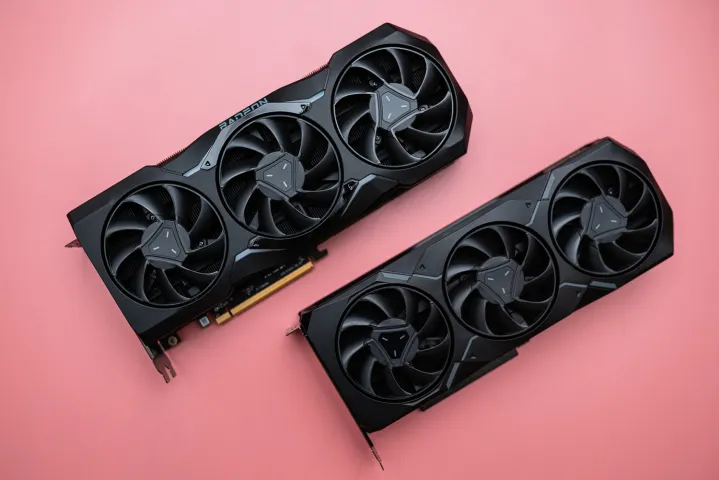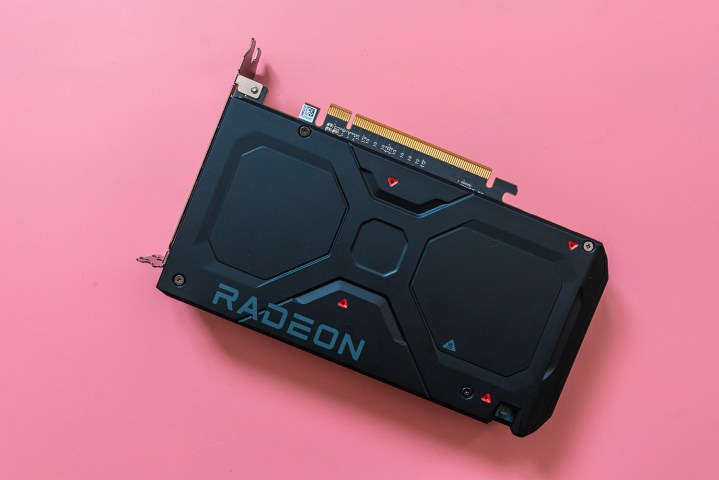In this generation of GPUs, it’s not AMD that has the best graphics cards — it’s still Nvidia. AMD’s offerings have been strong, but Nvidia trumps it in pure performance, reaching for the stars with the wildly overpriced RTX 4090 while AMD keeps things slightly more reasonable with the RX 7900 XTX.
What can AMD do to turn things around and come out on top in 2024? Will it gain an edge over Nvidia? Signs are pointing to an interesting battle ahead, but for AMD to win, there are a few things that need to happen.
Is AMD as good as it can be in 2023?

This has been an interesting year for graphics cards. We’ve had some new releases, we’ve had a lot of rumors about what’s yet to come, and we’ve gotten some perspective on how the cards that first saw the light of day in 2022 hold up now, with more competition and new software solutions to put them to the test.
In addition, with the GPU shortage long behind us (apart from the aforementioned RTX 4090), this year has been one of abundance, with plenty of GPUs always in stock. But how does AMD rank on the list of the best PC gaming hardware in 2023?
Short answer: It’s there, but it does much better in the CPU segment.
Overall, judging AMD’s RDNA 3 lineup and comparing it to Nvidia’s RTX 40-series, it’s hard not to notice that there are still plenty of reasons for potential PC builders to pick Nvidia. AMD’s range is competitive, but Nvidia has more GPUs to choose from. AMD also doesn’t have an answer to Nvidia’s RTX 4090, and it most likely won’t — not unless it has some insanely buffed-up version of the RX 7900 XTX up its sleeve. The competition ends at the RTX 4080 versus RX 7900 XTX, and even then, Nvidia is rumored to soon be releasing an RTX 4080 Super.
Forget the RTX 4090. If we look at performance alone, AMD keeps up with Nvidia — for the most part. The RX 7900 XTX is slightly faster in rasterization than the RTX 4080, and it offers the same amount of VRAM as the RTX 4090, while the RX 7800 XT beats the RTX 4070 with ease. The RX 7600 can’t compete with the RTX 4060, but the RX 7700 XT outperforms it.

Unfortunately for AMD, Nvidia has one feature that speaks to the hearts of many gamers — DLSS 3.5, which offers frame generation, ray reconstruction, and a greatly improved ocerall gaming experience in supported titles. While the RTX 4090 barely has any use for DLSS outside of games like Cyberpunk 2077 on Overdrive mode, cards that actually compete against AMD benefit from it a lot. It can turn the $600 RTX 4070 into something that obliterates cards that are twice as expensive. It’s impossible to ignore the value of DLSS 3, and AMD’s FSR 3.0 is not quite able to change the current narrative yet.
Even if AMD’s GPUs aren’t always as impressive as Nvidia’s, they’re usually a much better value. An affordable PC build will almost always feature a Radeon card by default. The problem is that AMD, unlike Nvidia, offers no incentive for people to upgrade beyond wanting higher frame rates. It has plenty of drastically discounted RDNA 2 cards in stock, but with no DLSS 3 equivalent, AMD is kind of its own worst enemy right now.
Long-story short — AMD has several solid GPUs, but Nvidia still dominates the market. However, AMD might be changing its approach in the next generation, and that could give it an edge.
An opportunity AMD can’t afford to waste

Both AMD and Nvidia are in the process of cooking up their next-gen graphics cards, and this time around, AMD is actually in a good position to well and truly beat Nvidia in the way that often matters most — value for the money.
Team Red is keeping RDNA 4 under wraps, but we’ve heard from several sources that AMD might be stepping down from the high-end GPU race for this generation. This means no (rumored) flagship Navi 41 chip. Instead, AMD is said to be aiming for the mainstream sector.
Moore’s Law Is Dead speculated about this a fair bit, suggesting that AMD might be working on a midrange graphics card that could cost around $400 to $600 and still be able to rival the RX 7900 XT in performance. The YouTuber says it’s unclear whether it would beat the rumored RTX 4080 Super — chances are that it won’t given that the current RX 7900 XT is quite a bit behind the RTX 4080. The source quoted by Moore’s Law Is Dead also wasn’t sure if the card would be able to compete against Nvidia’s Ada GPUs in ray tracing.
When is this mystery GPU coming, and what else can we expect from RDNA 4? Rumor has it that the lineup will arrive in 2024. If the top model will be around the level of the RX 7900 XT in performance, it’s possible that RDNA 4 will serve up several competitors to Nvidia’s current-gen cards, like the RTX 4070 and below. AMD might have a high-end chip hidden away somewhere, but whether that will come to be released remains to be seen.
Meanwhile, Nvidia has some plans of its own. We’re expecting to see three Super GPUs around the beginning of 2024. Nvidia might announce the RTX 4070 Super, RTX 4070 Ti Super, and the RTX 4080 Super during CES 2024, with availability to follow soon after. These graphics cards most likely won’t bring any major performance upgrades, but they will give Nvidia a chance to rectify its ridiculous pricing strategy in this generation. That, more than anything, will put the heat on AMD to strike back with even better-value RX 8000 cards later on in the year.
Things might get a little sketchier for AMD in 2025, though. Nvidia is rumored to be launching Blackwell GPUs in either late 2024 or early 2025. If AMD’s usual release cycle stays the same, this means that it won’t have an answer to Nvidia’s Blackwell GPUs for quite some time.
Still, if AMD plays its cards right, its 2024 lineup might be enough to keep Nvidia on its toes even after it moves on to next-gen graphics cards. AMD has a unique opportunity up ahead that it can’t afford to waste.
AMD needs to pick a lane

This current generation of cards, more than ever, has proven that Nvidia’s CEO Jensen Huang was right — falling GPU prices are a story of the past. Nvidia really didn’t hold back when it set the prices of its top two cards to $1,600 and $1,200, respectively — it later followed that up with an $800 RTX 4070 Ti. AMD, in comparison, appears to be positively frugal with its $1,000 and $900 flagships. However, it wasn’t until the RX 7800 XT that AMD truly got it right when it priced it at $500 from the get-go.
What does AMD need to do in order to pull ahead of Nvidia? It needs to keep carving out its own niche in the GPU market instead of trying to compete at the high end.
Let’s be real — AMD’s software and hardware solutions aren’t quite on Nvidia’s level yet, and I say this as a person who truly wants AMD to succeed. Nvidia desperately needs a rival that pushes it toward more reasonable pricing, and AMD is that rival right now, but it’s not quite there yet. All AMD needs is a bit of focus on the market that actually prefers to buy its GPUs instead of trying to steal away the few people who go all-out when buying PC hardware.
At the high end, Nvidia still rules. DLSS 3.5 beats FSR 3.0, which isn’t of the same quality, produces higher latency, and isn’t available in as many games. Ray tracing is still somewhat problematic for AMD GPUs, at least compared to Nvidia’s, and it might not be able to reach that same level soon.

Nvidia’s had more time to perfect its software and adapt its hardware, so AMD is left to play catch-up. It’s doing an admirable job, but for a person who is spending $3,000 or more on their PC, adding a couple hundred extra dollars for a GPU that will breeze through every possible task is not that big a deal. This is why it’s better for AMD to set the flagship battle aside and focus on winning over the mainstream market.
If AMD releases a GPU with decent ray tracing and great rasterization that’s capable of competing against Nvidia’s RTX 4070 Ti or even the RTX 4080, and then proceeds to price it at $500, it’s going to become an instant hit. At that level of performance, DLSS 3 becomes less of a big deal — such a GPU would be able to handle games at ultra settings anyway. AMD also often typically gives its cards more VRAM, so something like 16GB or even 20GB would provide the GPU with plenty of future-proofing.
All of that at $500 to $600? Sounds like a dream, and it’s a dream that Nvidia most likely won’t fulfill. Sadly, I just can’t see Nvidia adjusting its pricing to that extent going forward, which is why I’m borderline afraid of RTX 50-series cards.

This is pure speculation at this point, but there’s a lot more that AMD could do for the mainstream segment if it wanted to. If the flagship could rival the RX 7900 XT at $500, we might finally see a pretty powerful GPU in the $250 range. Something like that would become highly attractive in budget PC builds — say, an RTX 4070 rival at around $300.
AMD would also avoid the situation it’s currently in, meaning that gamers might as well buy RDNA 2 cards because the performance uplift is minimal and the cards are cheaper. It would have a handful of go-to options, leaving Nvidia scrambling to price-match. (I’d love to see that.)
These adjustments would give AMD a chance to shine in 2024, but also set it up in a good position to compete in 2025, once Nvidia’s Blackwell GPUs hit the market. Sure, AMD won’t have an answer to the (reportedly monstrous) RTX 5090, and perhaps not even the RTX 5080, but it’ll be right there in the mainstream sector, with GPUs that will still be relevant.
The success of RDNA 4 really hinges not just on performance, but most importantly, price. Will AMD rise to the challenge and actually beat Nvidia, or will it do what it did with the RX 7900 XTX — inflate its prices to be cheaper than Nvidia, but still higher than necessary? We’ll have to wait and see, but only one of these two paths may lead AMD to a successful 2024, and it’s not the path that trails behind and follows in Nvidia’s footsteps.
Editors' Recommendations
- AMD’s gaming revenue is down by 48%, and it won’t get better
- AMD’s graphics card sales just took a nosedive
- AMD’s canceled GPU could have crushed Nvidia
- The war between PC and console is about to heat up again
- RTX 4090 owners are in for some bad news




